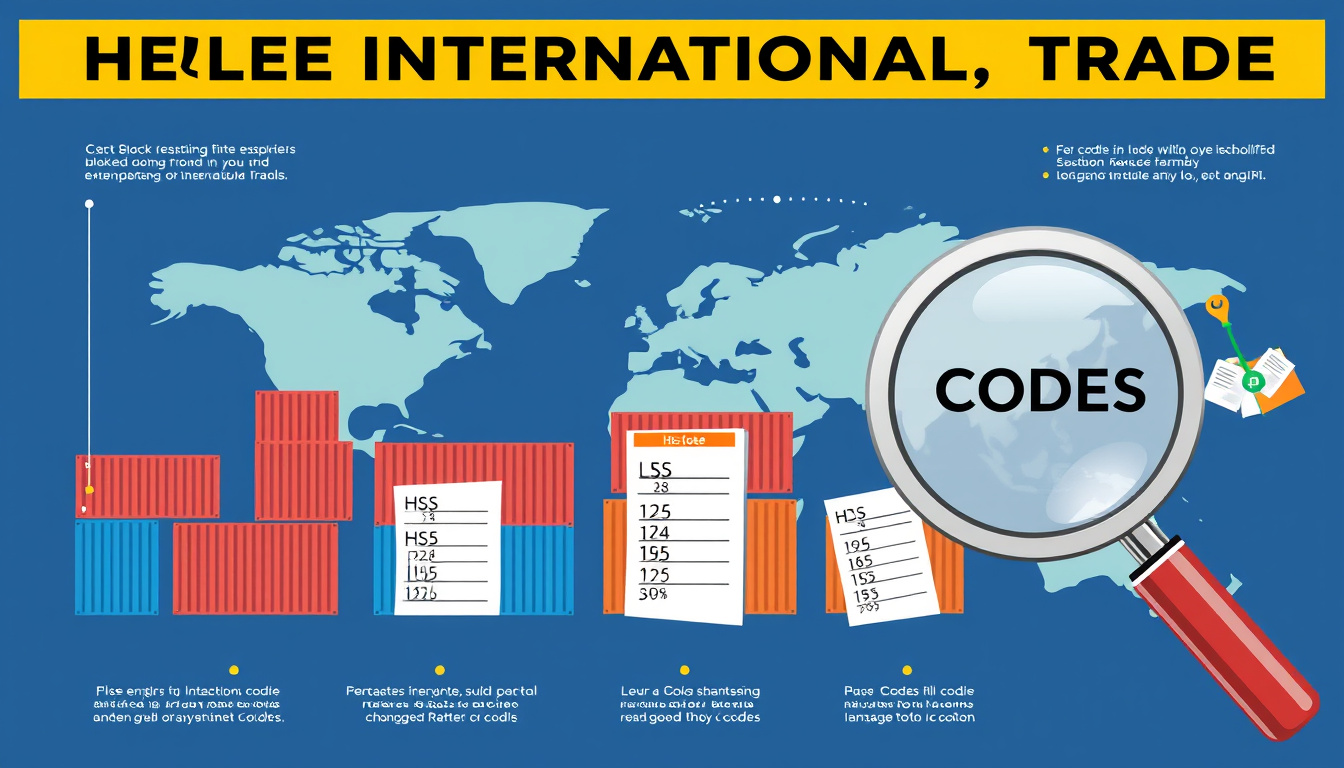In today’s interconnected global economy, understanding how goods move across borders is essential for businesses and individuals engaged in international trade. One of the most critical elements in this process is the Harmonized System (HS) tariff code—a global standard that facilitates identification, classification, and taxation of products in international commerce. This guide will walk you through everything you need to know about HS tariff code lookup, how to find the correct codes, and why accurate classification matters for smooth trade.
What Is an HS Tariff Code?
The Harmonized System Code, or HS code, is an internationally standardized numerical method of categorizing traded products. Developed and maintained by the World Customs Organization (WCO), the HS code system assigns a unique code to every product category based on its nature and composition. Typically, an HS code has 6 digits, allowing customs authorities worldwide to identify products uniformly, apply tariffs, monitor trade statistics, and enforce regulations.
The HS code is used universally and is the basis for determining tariffs, taxes, import/export restrictions, and compliance requirements.
Structure and Organization of HS Codes
HS codes are carefully structured into a hierarchical system:
- Sections: Broad commodity groups (for example, live animals or mineral products).
- Chapters: 2-digit codes representing product groups within a section.
- Headings: 4-digit codes further subdividing chapters into more specific categories.
- Subheadings: 6-digit codes (or longer where countries add digits) identifying detailed classifications.
For example, in the European Union’s tariff database, these are exemplified clearly by Section 1 (Live animals) with chapters like 01 (Live animals), 02 (Meat), and so forth. This systematic approach ensures precision in product classification.
Many countries also maintain a Harmonized Tariff Schedule (HTS) or customs database derived from HS codes, which include additional digits to accommodate local regulations. The U.S., EU, Canada, and others provide online resources for HS code lookup.
Why Is Accurate HS Tariff Code Lookup Important?
- Correct Duty and Tax Calculation: Tariffs vary widely depending on the HS code. An erroneous code can lead to overpayment or underpayment of taxes, creating compliance risks.
- Compliance and Avoiding Delays: Customs agencies use HS codes to enforce regulations. Incorrect codes may cause shipment delays, additional inspections, or even fines.
- Trade Statistics and Reporting: Governments and organizations use HS data to assess trade flows and economic policy.
- Proper Documentation: Accurate HS classification is necessary for export declarations, certificates of origin, and other customs paperwork.
How to Perform HS Tariff Code Lookup

- Use Official Customs and International Databases
Multiple countries provide free online services or tariff lookup databases. Popular examples include:
- United States International Trade Commission’s Harmonized Tariff Schedule: Allows users to search the US tariff codes by product description or code.
- European Commission’s TARIC database: Includes EU tariff numbers with detailed product categories available in multiple languages.
- World Customs Organization (WCO) Tariff Database: For official HS code standards.
- Online HS Code Lookup Tools
Several web-based tools simplify classification by allowing you to enter product descriptions to retrieve the relevant HS code. These services often provide additional features such as duty and tax estimation.
For instance, GlobalPost’s HS Classification Tool enables users to input descriptions like "wireless headphones" or "ceramic mugs" and receive relevant HS codes quickly. It also integrates with international shipping solutions for seamless customs handling.
- Use Automated Classification Services
To ensure accuracy, especially for complex products or bulk classification needs, consider instant classification tools such as those from Classifast.com. Classifast offers robust instant classifiers that categorize text inputs per several international standards, including HS, UNSPSC, NAICS, ISIC, and ETIM. This service helps streamline classification by quickly delivering precise codes, which is invaluable for exporters, freight forwarders, and customs brokers.
Best Practices for HS Code Lookup and Usage
- Be Specific With Descriptions: Use detailed and accurate product descriptions to get the most relevant HS code.
- Double-Check with Official Sources: Cross-verify HS codes with country-specific tariff schedules or customs agencies.
- Update Regularly: Tariff codes are updated periodically (annually or biannually). Make sure to use the current version.
- Consult Trade Experts if Needed: For unfamiliar product categories or high-risk shipments, consulting customs brokers or trade lawyers can avoid costly errors.
- Document Everything: Keep records of HS code determinations and supporting documentation in case of customs audits.
Conclusion
Mastering HS tariff code lookup is crucial to navigating the complexities of international trade efficiently. Accurate classification not only ensures compliance and avoids costly delays but also helps businesses calculate duties correctly and maintain smooth logistics. Leveraging official customs databases, user-friendly online tools like GlobalPost’s HS Classification Tool, and professional services such as Classifast.com for instant and reliable classification can empower exporters and importers alike.
In the ever-evolving landscape of global commerce, having your HS tariff codes at your fingertips will give you a competitive edge and peace of mind as you expand your international reach.
For those looking for an easy and fast way to classify products with internationally recognized standards including HS codes, Classifast.com offers an excellent solution by turning any text description into precise tariff classifications.
